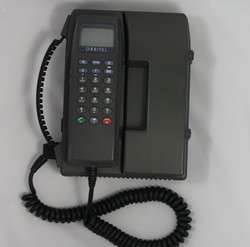Oribitel TPU 900 and TPU 901

The world's first GSM phone and the first phone to receive a text message
- Date launched: 1991
- Network: GSM 900Mhz
- Form: Transportable
- Size: 172(w)x216(h)x75(d) mm
- Weight: 2100g
- Can you use it today: Yes, in theory
The Orbitel TPU 900 (left) was the world's first GSM phone. As you can see it was hardly tiny. Digital technology was more bulky than analogue. This world's first went to a British company, Orbitel, a joint venture between Racal and Plessey, beating Nokia, Motorola and Ericsson to make the first phone to be approved for the new GSM standard in 1991.
As you can imagine these phones were not great sellers, however, Orbitel succeeded in exporting them to Germany and there was a revised model, the TPU 901. The Orbitel was the first phone that the UK's first GSM provider, Vodaphone, offered.
This phone also has the accolade of being the first phone to receive a text message. Neil Papworth, sent the world's first text "Merry Christmas" on 3 December 1992 to Vodafone director Richard Jarvis, who received it on an Orbitel TPU 901.[1]
As GSM spread to Africa, these phones became something of a status symbol, because of their large size.
Comments (12)
It has got 8 Watt RF power, really. Next cell 20 miles away? No prob! Really cool, today you never would have any no-contact-area